Key Takeaways
- Polygon is a layer-2 scaling solution that uses a proof-of-stake mechanism;
- On September 4, 2024, the original MATIC token was upgraded to POL to support the Polygon network's future growth;
- By staking POL, you can earn rewards for helping to secure the network;
- You can stake on the Polygon network either by becoming a validator and running your own node or by delegating your POL tokens to an existing validator.
Stop overpaying - start transferring money with Ogvio. Sign up, invite friends & grab Rewards now! 🎁
Do you feel like your crypto holdings are just sitting idle, gathering dust? Polygon staking could be the solution! By putting Polygon coins to work, you can earn passive income while helping to secure the network.
Not only do you earn rewards over time, but staking Polygon also contributes to the overall stability and growth of the platform. It’s especially worthwhile if you're in it for the long run and want to make the most out of your assets.
The process is easy and can be done using wallets like Ledger or popular exchanges like Bybit. So, let’s jump in and learn how to stake Polygon!

Did you know?
Subscribe - We publish new crypto explainer videos every week!
What is Curve Finance in Crypto? (Animated Explanation)


Table of Contents
- 1. What Is Polygon?
- 1.1. MATIC & POL: What’s the Difference?
- 2. What Is Polygon Staking?
- 2.1. Validator VS Delegator: Which Option Is Right for You?
- 3. How to Stake Polygon?
- 3.1. How to Stake Polygon Using Ledger and MetaMask
- 3.2. How to Stake Polygon on Bybit
- 4. Polygon Staking Rewards
- 5. Benefits & Risks of Staking Polygon
- 5.1. Polygon Staking Benefits
- 5.2. Polygon Staking Risks
- 6. Best Practices to Stake Polygon Securely
- 7. Conclusion
What Is Polygon?
Before diving into the details of Polygon staking, let's first understand what Polygon is and how it fits into the broader cryptocurrency landscape.
Latest Deal Active Right Now:Formerly known as Matic Network, Polygon has become a key player in the cryptocurrency space. Its success comes from its role as a layer-2 scaling solution for Ethereum, the second-largest blockchain.
In simple terms, Polygon helps Ethereum run more smoothly by taking on some of its transaction load. Ethereum is often bogged down by high gas fees and slow transaction times, especially during periods of high traffic. Here, Polygon steps in to ease this congestion, allowing for faster transactions and lower fees.[1]
Think of Polygon as an extension of Ethereum that helps it scale efficiently, making the whole network more usable without sacrificing security.
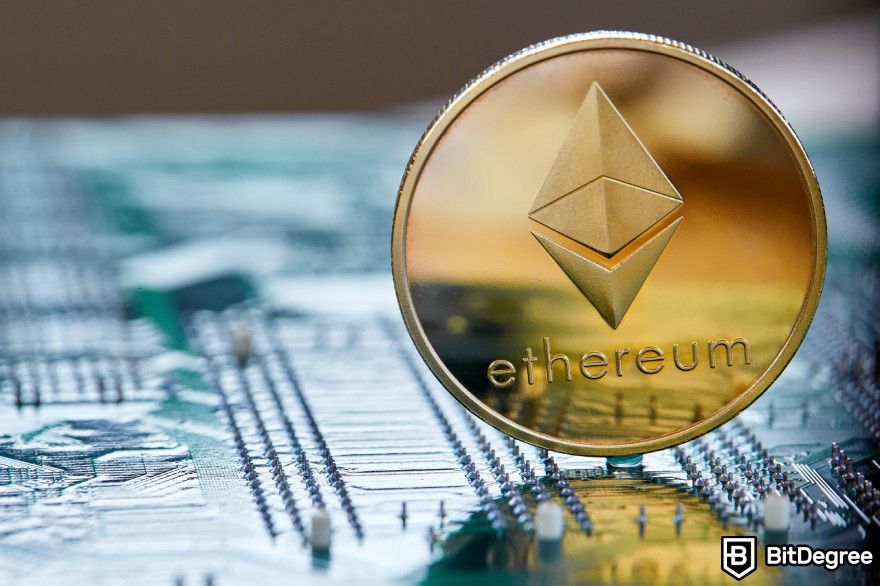
With Polygon, you can do most of what you would on Ethereum but with lower fees. This makes it more approachable to explore decentralized exchanges (DEXs), buy and sell NFTs, engage in decentralized finance (DeFi) applications, and even stake your coins to earn rewards. If you're curious to learn more about the network, feel free to dive into a more detailed discussion in this article.
MATIC & POL: What’s the Difference?
Before we get into Polygon staking, let’s go over some important background about the network’s native token to avoid any confusion.
Originally, Polygon’s native token was called MATIC. It was used for various activities across the network, including staking. Polygon MATIC staking played a big role in securing the network and keeping things running smoothly. However, over time, it became clear that MATIC had certain limitations in terms of functionality.
To address these, after years of community discussions, Polygon Labs officially upgraded MATIC to its new Polygon Ecosystem Token (POL) token on September 4, 2024. This also marks the launch of Polygon 2.0.
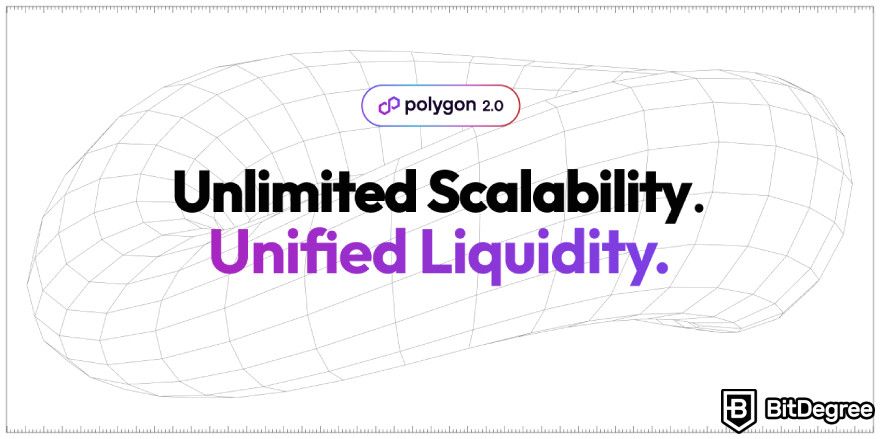
This new native token is designed to have a more enhanced role compared to its predecessor, allowing for greater network functionality and supporting Polygon’s growth and expansion. At its core, POL serves several key functions:
- Gas Token: POL is used for transactions and interacting with applications on Polygon PoS, incentivizing validators to secure the network.
- Network Security: Staking POL helps achieve consensus and reinforces the network's overall security.
- Governance: Holders can participate in decisions about Polygon’s future through Polygon Improvement Proposals (PIPs), making the network more decentralized and community-driven.
- Community Funding: A portion of POL emissions is set aside for initiatives that promote network growth and community engagement.
- Hyperproductive Token: POL allows validators to secure multiple chains, enhancing scalability and security within the aggregated network.
Naturally, this upgrade raised some questions from the community. Even after the upgrade has taken effect, questions like, "What will happen to my MATIC tokens?" and "Will ongoing Polygon MATIC staking be affected?" are still quite common. Many also wonder whether POL can be staked in the same way as MATIC.
The good news is that Polygon has made the transition seamless. If you hold MATIC on Polygon PoS, your tokens will automatically convert to POL without you needing to do anything. This also applies to any ongoing Polygon MATIC staking—all tokens will be upgraded to POL automatically, so stakers don’t need to take any manual steps.

However, if you hold MATIC on Ethereum or centralized exchanges (CEX), you’ll need to manually upgrade your MATIC to POL using the official migration portal, which offers a 1:1 conversion.
As for whether POL can be staked in the same way as MATIC, the short answer is yes. You can continue staking POL just as you did with MATIC. That being said, let’s conduct a closer inspection of how Polygon staking works in the next section.
What Is Polygon Staking?
Polygon staking leverages a proof-of-stake (PoS) consensus mechanism, which differs significantly from proof-of-work (PoW). In PoW, powerful computers compete to solve complex puzzles, and the winner validates a block of transactions, earning rewards. This process is energy-intensive.
In PoS, validators are randomly chosen to verify transactions and blocks. This randomness eliminates the need for massive amounts of computing power in PoW. As a result, it leads to significantly lower energy consumption[2].
In essence, staking involves locking your POL on the Polygon blockchain to validate transactions and secure the network. In return for your service, you'll be rewarded with more POL.
Validator VS Delegator: Which Option Is Right for You?
Basically, there are two primary ways to stake POL tokens: becoming a validator or a delegator. Each role comes with its own set of responsibilities and rewards.
Becoming a Validator
Validators play an important role in the Polygon network. They're responsible for double-checking transactions and adding new information to the network.
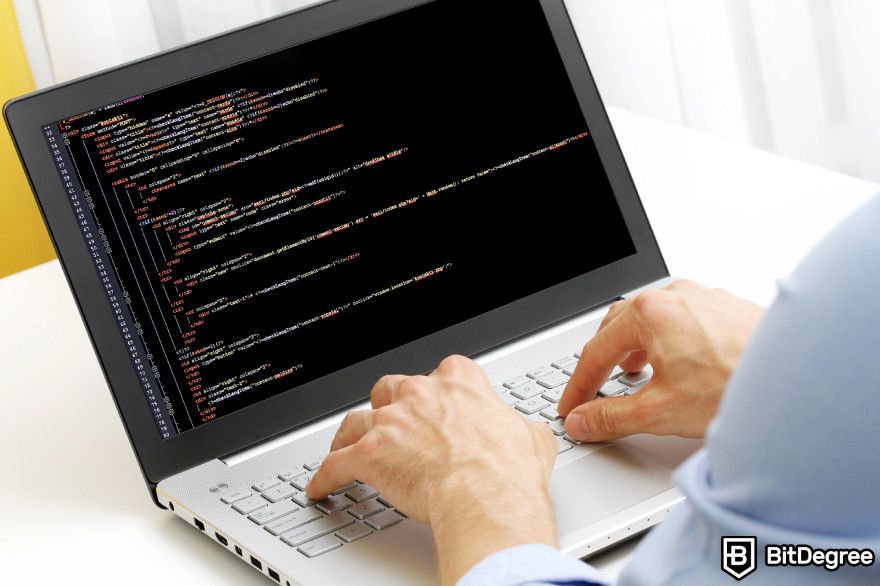
To become a validator, you need technical expertise and computer equipment to manage a blockchain network. Here's a glimpse of what that entails:
- Setting Up: You must set up and maintain a reliable server that runs the Polygon client software. This server must be online 24/7 to ensure the network can rely on your node to validate transactions.
- Staking POL: As a validator, you need to stake a significant amount of POL. The more coins you stake, the higher your chances of being selected to validate transactions and earn rewards.
- Obtaining Rewards: You can receive additional POL tokens based on the amount of POL you've staked and the number of transactions you validate. Additionally, you may charge a commission when delegators entrust you with their POL.
Being a validator offers more significant rewards but requires serious commitment and technical know-how. If you're up for the challenge and have the resources, you can rent a cloud server to become a validator on the Polygon network.
Keep in mind that the server needs to be online 24/7 to validate transactions effectively. Any downtime can mean fewer rewards, and repeated issues might even get you kicked off the network.
Becoming a Delegator
If becoming a validator seems daunting, you can still participate in staking through delegation. Delegators essentially "lend" their POL tokens to validators of their choice, supporting the network and earning rewards in return. Here’s how it works:
- Choosing a Validator: As a delegator, your first task is to select a reliable validator. Look for validators with a good track record, reasonable commission rates, and strong performance metrics.
- Delegating POL: Once you've chosen a validator, you can delegate your POL to them. By doing so, you’re entrusting your coins to the validator for network security.
- Sharing Rewards: Delegators receive a portion of the rewards earned by the validator. These rewards may come with a small commission fee paid to the validator for their service.
As a delegator, you can easily contribute to the Polygon network and earn passive income. You benefit from letting the experts handle the technical side while validators gain the support they need to maintain a blockchain ecosystem.
How to Stake Polygon?
As I've mentioned, delegation offers a more accessible Polygon staking option than operating your own validator node.
To do this, you’ll need to delegate your POL to a trusted validator on the network. It’s really important to find a reliable validator to maximize your staking rewards and reduce any potential risks.

Here’s what to consider when choosing a reputable validator for staking Polygon:
- Uptime: Look for validators with 100% uptime, running 24/7 throughout the year. Validators that fail to maintain availability when required will have their rewards reduced and might be removed from the network.
- Checkpoint Signed: Aim for validators who consistently sign at least 98% of the last 200 checkpoints. While 100% is ideal, occasional missed ones won't significantly impact your rewards.
- Transparency: Avoid anonymous validators. Choose one with a clear website and contact information. It’s a sign they're committed and reachable.
- Self-Stake: Consider validators with a larger portion of their own staked POL. These validators have "skin in the game," making them more invested in the network's health and more likely to be reliable.
- Commission: Look for validators with lower commission fees. However, be cautious of 0% commission offers, as they may be a bait-and-switch scheme. Validators must be profitable to ensure long-term viability.
Now that you’re familiar with the key factors for choosing a reliable validator, let’s walk through the step-by-step guide to staking Polygon. There are a few different ways to stake your POL, whether through a wallet or an exchange.
How to Stake Polygon Using Ledger and MetaMask
One of the safest ways to stake Polygon is through a hardware wallet like Ledger in combination with MetaMask. Not only is it secure, but it’s also really user-friendly.
If you want to start delegating your POL using the app, just follow these simple steps. But before you begin, make sure your Ledger wallet is all set up and good to go.
Step 1: Setting Up Ledger Live App
First, visit Ledger's official website and download the Ledger Live application that is compatible with your device. Once the download is complete, double-click the installer file and follow the on-screen instructions to complete the installation process.
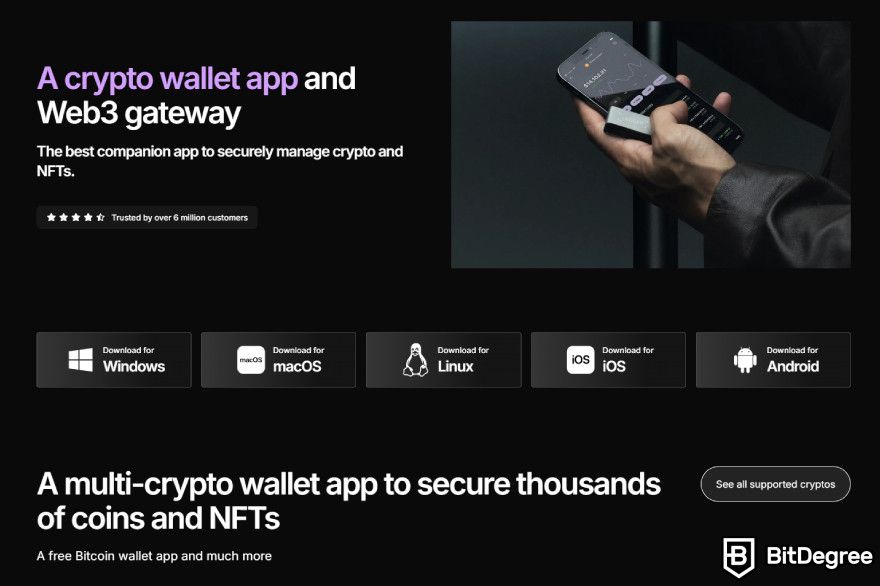
Step 2: Installing the Ethereum (ETH) App
On the Ledger Live application, navigate to the 'My Ledger' section. Connect and unlock your Ledger device. Once connected, search for the [Ethereum (ETH)] app in the catalog. Select the [Install] option to initiate the installation process on your Ledger’s device.
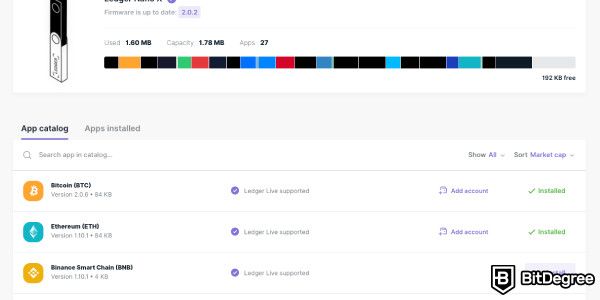
Step 3: Adding an Ethereum (ETH) Account
Navigate to the 'Accounts' section and select the [+Add account]. Choose [Ethereum (ETH)] from the dropdown menu and click [Continue] to proceed.
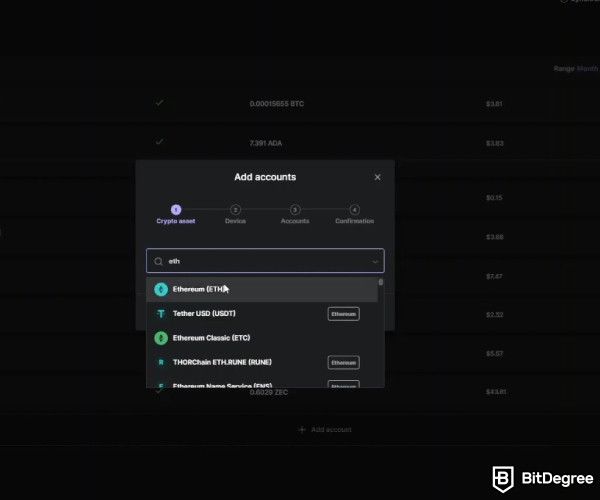
When prompted, open the Ethereum app on your Ledger device using the buttons. Name your account and select [Add account]. Then, complete the process by clicking [Done] and closing the Ledger Live app.
Step 4: Connecting Ledger Account to MetaMask
Install and set up the MetaMask extension on your web browser. After your MetaMask browser wallet is ready, click the icon in the upper-right corner, select [Connect a hardware wallet], and Select the [Ledger] option when prompted.
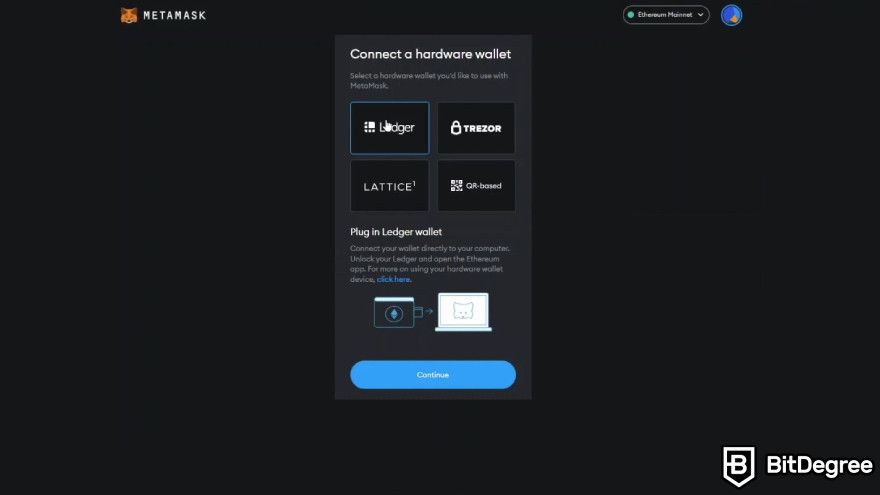
Before proceeding, ensure the "Ethereum (ETH)" app is open on your device and your Ledger displays "Application is ready." If everything is ready, click [Continue], select your device from the options, and click [Connect].
After connecting, select your Ledger account with the POL tokens you want to stake and click [Unlock]. Your wallet is now ready for the staking process.
Step 5: Connecting MetaMask to the Polygon Web Wallet
Open the Polygon Web Wallet in your browser. Then, select [Connect to a Wallet] in the upper right corner and choose [MetaMask]. When prompted, select your Ledger account, click [Next], and then [Connect] to proceed. Next, select [Sign] to authorize the connection.

Your Ledger device will now display a "Sign message" text. Review the message using the buttons on your Ledger to scroll right. If all the information looks good, select [Sign message] and confirm by pressing both buttons simultaneously. Once approved, MetaMask will connect with the Polygon Wallet app.
Step 6: Choosing a Validator
In the Polygon Web Wallet, click on [Polygon Staking] to view a list of "All Validators." For a quick tip, sort the validators by performance and choose those with a high "Checkpoint signed" score and a low "Commission" rate.
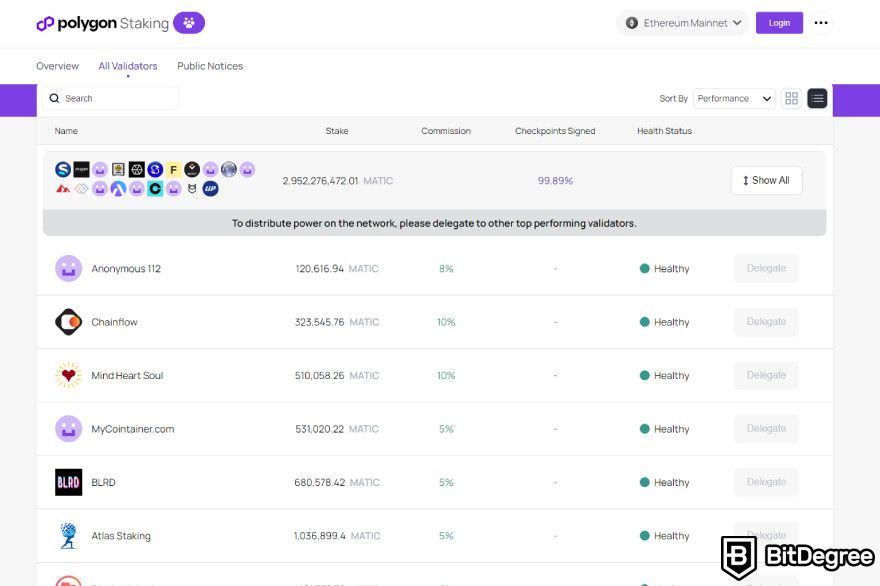
You can also refer to the earlier section for detailed guidance on selecting reliable validators and conducting further research as necessary.
Once you've chosen a validator, select the [Delegate] option beside it. Enter the amount of POL you wish to stake, then click [Continue].
Step 7: Confirming Polygon Staking
MetaMask will pop up on your screen and ask: "Give permission to access your POL?" Review the fee amount displayed, and if everything appears accurate, click [Confirm] to grant permission.
Your Ledger device will then display "Review transaction." Use the buttons to scroll through the transaction details.
If everything looks good, confirm the transaction by pressing both buttons on your Ledger device simultaneously to "Accept and send." Once done, your Ledger will display "Application is ready" while waiting for confirmation of the transaction.
Step 8: Finalizing
In the Polygon Web Wallet, select [Delegate], and MetaMask will ask you to confirm the transaction again. Ensure the 'Blind signing' option is enabled on your device.
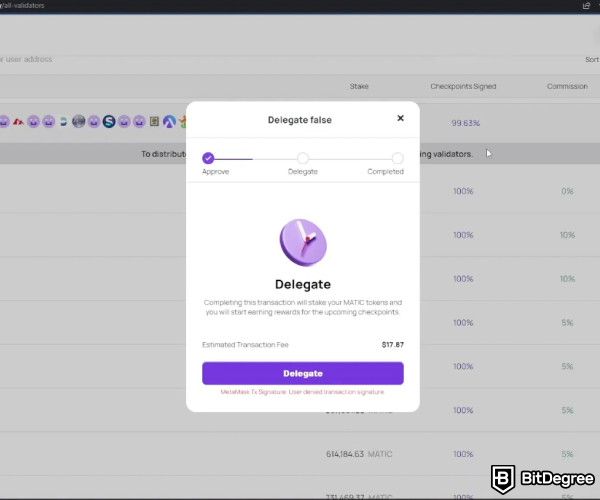
After clicking [Confirm], review the transaction on your device and sign it again. Once the transaction is confirmed, the Polygon Web Wallet app will display "Delegation Completed."
Congratulations! You've successfully staked your POL tokens using Ledger and MetaMask! While the process may involve several steps, utilizing a hardware wallet offers top-notch security for your holdings.
How to Stake Polygon on Bybit
If you don't have a hardware wallet, no problem! You can also easily stake Polygon using a well-known crypto exchange like Bybit. The process is fairly simple and easy to follow.
Step 1: Go to Bybit and log in to your account. If you don’t have one yet, sign up and complete the verification process.
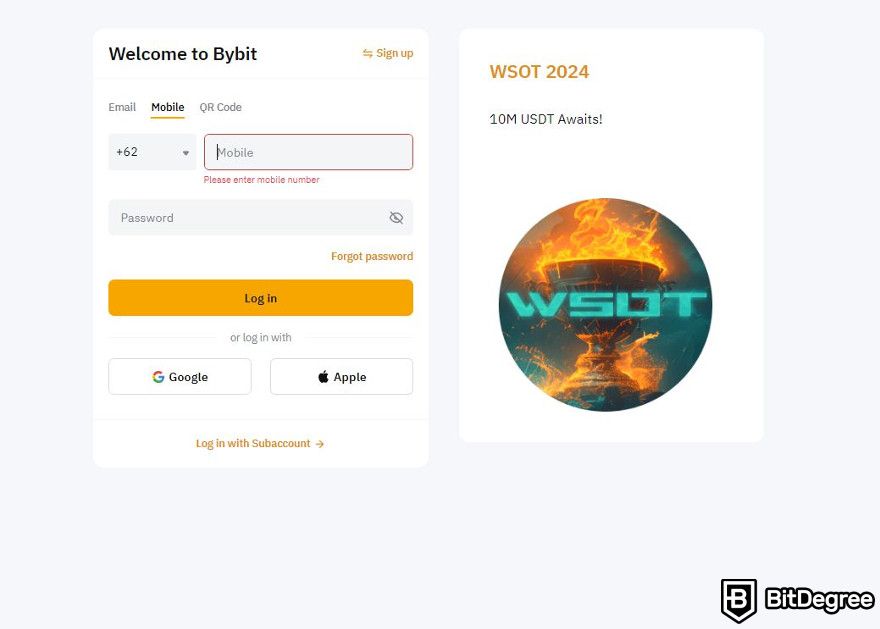
Step 2: Deposit POL into your Bybit account or purchase it directly on the platform.
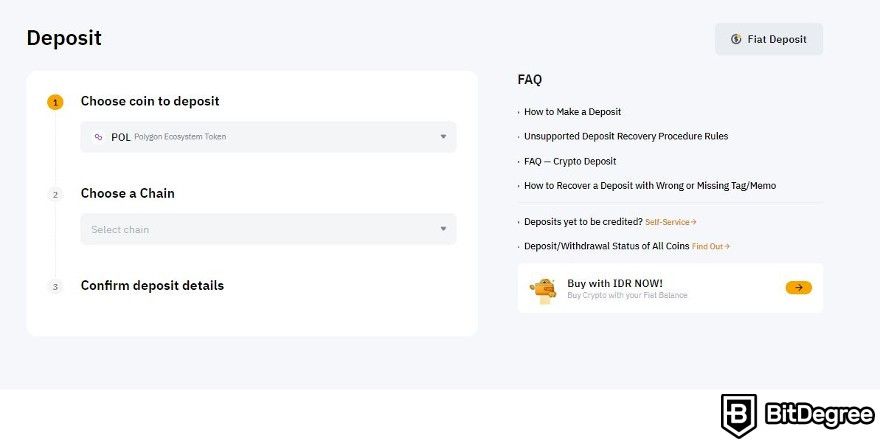
Step 3: In your Bybit dashboard, go to the "Finance" section, then "Earn," and select [Bybit Savings].
Step 4: Select POL from the list and click [Stake Now].

Simply enter the amount of POL you wish to stake and hit [Stake Now] again after ticking the agreement box. And that's all there is to it! Your POL is now staked, and you can easily track your Polygon staking rewards from the easy-to-use dashboard.
While this is not the "traditional" way of staking POL, it's definitely a much easier and quicker one.
Polygon Staking Rewards
Now that you know how to participate in Polygon staking securely, let's talk about the rewards. The network has set aside 12% of its total POL supply (1.2 billion) specifically for staking yields.
Polygon gives validators a fixed amount of these rewards, which they share proportionally with everyone delegating their coins. The more POL tokens you contribute, the bigger your slice of the pie.
Your exact annual percentage yield (APY) can vary depending on your chosen platform. Some platforms might offer high APYs but have additional fees, while others provide a more modest return but are easier to use.

Also, remember that validators can set their own commission rates for delegators staking through their nodes. This means they will deduct a portion of your Polygon staking rewards as a service fee. So, consider the commission rate carefully before pledging your coins.
Benefits & Risks of Staking Polygon
We’ve covered the essential steps for securely staking Polygon. Now, let’s talk about the potential benefits and risks that come with it. Understanding both sides of the coin may help you make an informed decision that aligns with your financial goals and risk tolerance.

Did you know?
Subscribe - We publish new crypto explainer videos every week!
Crypto Fees Explained: How Not to Overpay? (Animated)


Polygon Staking Benefits
Staking POL offers a variety of benefits that can appeal to both new and experienced crypto enthusiasts. Here are some of the key advantages:
Accessible Entry Point
One of the most appealing aspects of Polygon staking is its low entry barrier. Unlike some protocols requiring significant capital, staking Polygon allows participation with a much smaller investment. Even individuals who own as little as 1 POL can start staking!
Additionally, by delegating holdings to a validator, you don't need to be a blockchain expert. A basic understanding of crypto wallets is sufficient to start earning Polygon staking rewards.
Supercharging Your Passive Income
Staking offers an exciting opportunity to amplify your holdings, especially if you’re a long-term investor. By delegating your coins, you're essentially putting them to work, generating passive income that complements your long-term investment strategy.

Moreover, it harnesses the power of compound interest, which is important in accumulating wealth over time. Usually, your rewards are automatically “restaked” or added to your staked amount.
This process creates a compounding effect where your rewards earn additional rewards on top of the initial stake. Over time, this compounding can significantly supercharge your returns.
Securing the Network Ecosystem
While earning passive income is a compelling reason to stake POL, the advantages extend beyond that initial benefit.
By delegating your POL, you support validators who verify transactions and support network integrity. This system incentivizes honest behavior, ultimately strengthening its overall security.
Your participation also contributes to Polygon's overall health and growth. As the network thrives, it fosters trust and wider adoption, potentially impacting the long-term value of your POL holdings.

- Secure and reliable
- Accepts fiat currencies
- Lots of trading options
- Reputable exchange
- Accepts fiat currencies
- Offers various trading options

- Huge trading variety
- Regulation-compliant around the globe
- Fair trading fees
- Beginner-friendly
- A wide array of features
- Vast number of different crypto coins & tokens

- Beginner-friendly
- Secure
- Decent trading and withdrawal fees
- Crypto.com Visa Card
- Automated tools & bots
- Ecosystem synergy with CRO
Polygon Staking Risks
While Polygon staking offers numerous benefits, it's essential to understand the potential risks involved. Being aware of these risks can help you make informed decisions and develop strategies to mitigate them. Here are some critical risks associated with it:
Slashing Risk
Polygon staking utilizes a slashing mechanism to ensure validator honesty and network reliability. Validators face penalties for being offline during critical moments or engaging in malicious activities. Depending on the severity of the infraction, these penalties can range from reduced rewards to complete removal from the network.
As a delegator, a slashed validator directly affects your earnings. If your chosen validator suffers a slash, your potential staking rewards may decrease or disappear entirely.
Therefore, it's important to select your validators carefully. Prioritize validators with a proven track record of reliability and strong performance metrics. This proactive approach helps minimize your exposure to slashing risks and safeguard your staked POL.
Liquidity Risk
Another essential factor to consider when staking is liquidity risk. Typically, there's a cooldown period after you "unstake" your coins, during which some or all of your crypto cannot be traded. The specific duration can vary depending on the staking platform.

This limited liquidity can pose a challenge if the market experiences a sudden downturn. Imagine staking your POL and then encountering an unexpected price drop. In such a scenario, you might need immediate access to your funds to sell or trade, but the cooldown period could prevent you from doing so.
To minimize the risk of liquidity challenges, plan carefully. Before delegating your POL, thoroughly research the specific cooldown period of your chosen platform. This knowledge allows you to stake only the amount of POL you're comfortable locking away for the designated timeframe.
Regulatory Risk
The regulatory landscape surrounding cryptocurrencies, including staking, is constantly evolving. Governments and financial institutions are continually figuring out how to integrate these new financial instruments.
As regulations shift, they can significantly impact the legality, tax implications, and overall viability of staking. For example, a regulatory body could ban staking on certain platforms if it’s deemed to violate specific rules.
As a result, it's essential to stay informed about legal developments. By keeping up with the latest regulations, particularly those in your region, you can make informed decisions and adjust your strategy.

All in all, Polygon staking offers various attractive rewards. You can earn passive income by delegating your POL tokens while actively securing the network.
However, it's crucial to be aware of the associated risks, including slashing, liquidity, and regulatory risks. By understanding these risks and taking steps to mitigate them, you can better protect your assets and maximize the benefits of staking.
Best Practices to Stake Polygon Securely
After considering the potential benefits and risks of staking, let's discuss some important security practices that can ensure your safety. By following these tips, you can maximize your Polygon staking rewards while effectively managing potential security risks.
Utilizing Strong Passwords and 2FA
To stake Polygon securely, you need strong account protection. Start by ensuring that all your accounts and wallets have strong, unique passwords. A strong password should be a mix of upper- and lowercase letters, numbers, and symbols. Avoid using personal information like birthdays or common words that can be easily guessed.
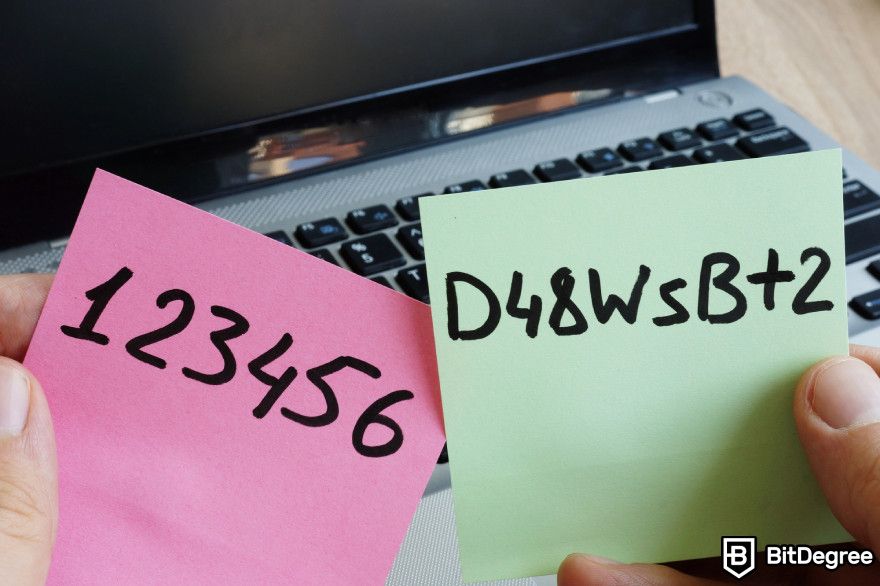
Additionally, enable two-factor authentication (2FA) on your accounts whenever possible. This method adds an extra layer of security by requiring a second verification step, typically a code sent to your mobile device, before granting access.
Constantly Checking for Software Updates
Keeping your software up-to-date is important when it comes to Polygon staking. This necessity applies to everything from your hardware wallet software to the staking application.
Developers are constantly releasing updates that act like digital patches, fixing security holes and making things run smoother. By running the latest versions, you dramatically reduce the risk of getting caught by known bugs or sneaky exploits.
Keeping Updated and Informed
The crypto space moves fast, and staking is no exception. To stay on top of your game, it's essential to stay informed about crypto news. Follow reliable sources and communities that cover staking and the broader crypto market.
It's also a good idea to follow social media pages that offer legal insights or bookmark reputable news sources to keep up with the latest legal changes in the crypto space. This way, you can save time and stay informed about all the industry developments.
By staying informed, you'll always be in the know about the latest developments, potential security risks, and regulatory changes. This knowledge will help you actively keep your staked assets safe throughout your crypto journey.
Staying Vigilant Against Phishing and Malware
Phishing attacks are digital scams designed to steal your logins and drain your accounts through fake emails or websites. To avoid falling victim to these scams, it's important to approach links and URLs with high suspicion.

Double-check everything before clicking, and be skeptical if something seems too good to be true. This level of vigilance will keep you one step ahead of potential threats.
Malware is another sneaky threat. It can be hidden in downloads or attachments, waiting to steal your private keys or other sensitive information. To combat this, consider using a strong antivirus program and regularly scanning your system for any hidden threats. This proactive approach is essential to keeping your crypto safe and sound.
Using a Hardware Wallet
For stronger security, consider using a hardware wallet. Unlike software wallets, hardware wallets are physical devices that keep your private keys offline, completely isolated from the internet. This feature makes them nearly impossible to hack!
Popular options like Ledger Nano X and Trezor Safe 5 work seamlessly with Polygon, offering top-notch security features and a user-friendly experience. So, if you're serious about staking security, a hardware wallet might be your best weapon.
Conclusion
Polygon staking allows you to support the network's functionality and security while earning crypto rewards at the same time. You can either become a validator yourself or delegate your POL tokens to an existing validator, giving you the flexibility to choose based on your experience level.
While staking is generally less risky than trading, it’s still important to be aware of the potential risks. For instance, slashing penalties can reduce your staked amount if your validator acts improperly. There are also online threats like phishing or malware that could put your assets at risk.
To minimize these risks, make sure to choose a reliable validator carefully. Using secure options like Ledger and Bybit to stake Polygon also helps, as they offer intuitive interfaces and strong security features to ensure a smooth and safe staking experience.
The content published on this website is not aimed to give any kind of financial, investment, trading, or any other form of advice. BitDegree.org does not endorse or suggest you to buy, sell or hold any kind of cryptocurrency. Before making financial investment decisions, do consult your financial advisor.
Scientific References
1. A. Gangwal, H. R. Gangavalli, A. Thirupathi: 'A survey of layer-two blockchain protocols';
2. F. Saleh: 'Blockchain without waste: Proof-of-stake'.









